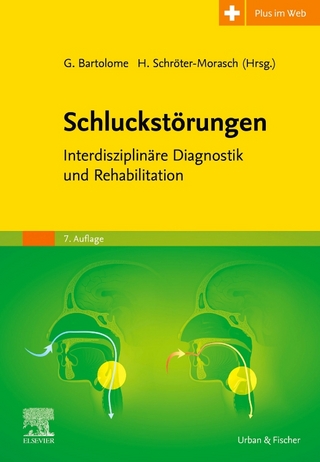
Eustachian Tube and Middle Ear Diseases
Springer Verlag, Japan
978-4-431-70033-3 (ISBN)
- Titel ist leider vergriffen;
keine Neuauflage - Artikel merken
We have been particularly concerned to present a balanced view of the advantages and disadvantages of different methods currently available for assessing cell proliferation. The assessment of cell proliferation often requires some familiarity with mathematical methods, but in this book we have attempted to keep detailed mathematical analyses to a minimum. We have asked exponents of each of the well-recognised methods to critically review the tech- niques and the ways in which they may be applied to clinical mate- rial.
1 Regulation of the Eukaryotic Cell Cycle.- Mitosis-Promoting Factor.- The cdc2 Gene.- Histone H1 Kinase.- Activation of Mitosis-Promoting Factor.- Cyclins.- Phosphorylation and Dephosphorylation of p34cdc2.- cdc25 and the Timing of MPF Activation.- Dependence of Mitosis on DNA Synthesis.- The wee1 and niml Genes.- The sucl Gene.- Calcium.- Why Two Classes of Cyclin?.- Exit from Mitosis.- Cyclin Degradation.- Regulation of Cyclin Destruction by the Mitotic Spindle.- Cytostatic Factor and c-mos Proto-oncogene.- Cell Cycle Initiation.- Role of cdc2.- G1 Cyclins.- Conclusion.- 2 Growth Factors, Oncogenes and Tumour Suppressor Genes.- Growth Factors and Growth Factor Receptors.- Cytoplasmic Signal Transduction Pathways.- Immediate Early Genes.- The los and jun Genes.- The myc Genes.- Other Immediate Early Genes.- Steroid Receptors.- Tumour Suppressor Genes.- The p53 Gene.- Retinoblastoma Protein.- Conclusion.- 3 The Kinetic Organisation of Tissues.- The General Organisation of Tissues.- Evidence for the Existence of Stem Cells.- Regulation of Stem Cells and the Lineages Derived from Them.- Regulation by Position.- Regulation by Intercellular Communication.- Negative Regulators of Cell Proliferation.- Control of Cell Number and Heterochrony.- Regulation by Growth Arrest.- Regulation by Cell Death.- Do Stem Cells Exist in Conditional Renewal Tissues?.- Cellular Heterogeneity in Tumours.- Conclusion.- 4 Basic Methods for Assessing Cellular Proliferation.- The Cell Cycle.- Growth Fraction.- Cell Loss.- Growth Curves.- Age Distribution.- State Measurements.- Thymidine Incorporation.- Non-Autoradiographic Method of Detecting Incorporated Thymidine.- Mitotic and Labelling Indices.- The Fraction Labelled Mitoses Method.- The Continuous Labelling Method.- Thymidine Labelling - Clinical Applications.- Flow Cytometry.- Summary.- Rate Measurements.- The Rate of Entry into S Phase.- The Rate of Entry into Mitosis.- Summary.- Conclusion.- 5 Mitosis Counting.- Mitosis Counting - Methods.- Mitotic Count.- Mitotic Index.- Mitotic Rate.- Mitosis Counting - Applications.- Uterine Smooth Muscle Tumours.- Gastrointestinal Smooth Muscle (Stromal) Tumours.- Endometrial Stromal Sarcomas.- Placental Site Trophoblastic Tumour.- Ovarian Neoplasms.- Lymphomas.- Other Applications.- Mitosis Counting - Advantages.- Mitosis Counting - Limitations.- Tumour Heterogeneity.- Delay in Fixation.- Inter-Observer Variation.- Cell Size Variation.- Variation in the Area of High-Power Fields.- Conclusion.- 6 Flow Cytometry.- Development and Properties of Flow Cytometers.- General Advantages and Disadvantages of Flow Cytometry.- DNA Flow Cytometry.- Intrbduction.- Methodology.- Clinical Value.- Multiparameter Flow Cytometry.- Conclusion.- 7 Measurement of Cell Proliferation Using Bromodeoxyuridine.- The Parameters of Tumour Cell Proliferation.- Flow Cytometric Methods.- Tissue Preparation and Staining.- Data Acquisition.- Data Analysis.- The Relative Movement Method.- Modifications of the Single Relative Movement Calculation.- Comparisons of Analytical Methods in the Context of Solid Tumours.- Intra- and Inter-Tumour Heterogeneity.- Immunohistochemical Localisation of BUdR.- Staining Procedure.- Clinical Correlations.- Conclusion.- 8 The Application of Immunohistochemistry in Assessment of Cellular Proliferation.- Cell Cycle Associated Antigens.- Ki-67 Antigen.- Proliferating Cell Nuclear Antigen.- DNA Polymerase 0 and a.- p125/6.5 Antigen.- K 112 Antigen.- Transferrin Receptor.- Mitosis-Associated Changes.- Bromodeoxyuridine.- Markers of Quiescent and non-Proliferating Cells.- Markers of Transition from the Quiescent to the Proliferative State.- Quantification and Interpretation of Results.- Conclusion.- 9 Nucleolar Organiser Regions.- Nucleolar Organiser Regions and Nucleoli.- Argyrophilic NORs.- Demonstration of NORs.- AgNOR Staining Techniques.- Enumeration of AgNORs.- Tissue Sampling.- Section Thickness.- NOR Aggregation and Segregation.- NOR Numbers and Ploidy.- Transcriptional Activity.- Assessment of AgNORs in Interphase Nuclei.- Sample Size.- Effect of AgNOR Superimposition and Aggregation.- AgNOR Number per Nucleus.- AgNOR Area.- AgNOR Assessment by Image Analysis.- Significance of High AgNOR Counts.- Proliferation or Ploidy?.- Correlation with Other Indices of Proliferation.- Non-Hodgkin's Lymphoma.- Breast Carcinoma.- Lung Carcinomas.- Applications in Histopathology.- Conclusion.- 10 Clinical Aspects of Assessing Cell Proliferation.- Methods Used to Assess Cell Proliferation.- Clinical Applications.- Diagnosis.- Prognosis.- Predicting Response to Treatment.- Conclusion.- 11 Cell Proliferation and the Principles of Cancer Chemotherapy.- Evolution of the Principles.- The Principles in Practice.- Application to Particular Neoplasms.- Application in Choice of Treatment for Individuals.- New Approaches to Estimating Resistance and Growth Rates.- Mathematical Model Description and Development.- Model Applications.- Conclusion.
| Zusatzinfo | 23 black & white illustrations, biography |
|---|---|
| Verlagsort | Tokyo |
| Sprache | englisch |
| Gewicht | 675 g |
| Themenwelt | Medizin / Pharmazie ► Gesundheitsfachberufe ► Logopädie |
| Medizin / Pharmazie ► Medizinische Fachgebiete ► HNO-Heilkunde | |
| ISBN-10 | 4-431-70033-1 / 4431700331 |
| ISBN-13 | 978-4-431-70033-3 / 9784431700333 |
| Zustand | Neuware |
| Haben Sie eine Frage zum Produkt? |
aus dem Bereich


